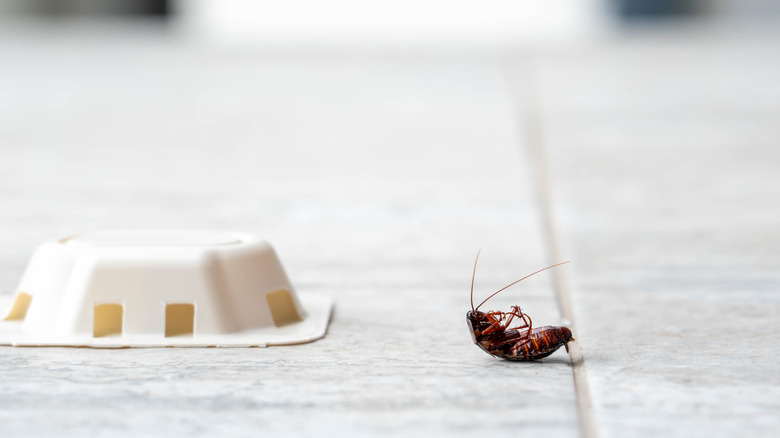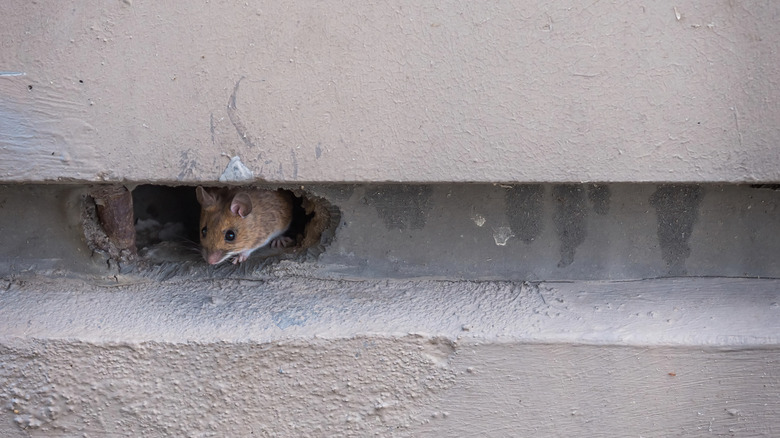Keep An Eye On Potential Pest Problems Before Buying A Home: Here's How
Buying a home is an exciting time, as well as a stressful one. The last thing you want to do is add more stress and expenses to the process. There's already so much to consider, like budget, location, features, and more. Plus, you may also be on the lookout for red flags to consider when buying a home in a neighborhood. Pest problems are one more thing you should keep an eye on while viewing homes. No one wants to move into their dream house to find out it is infested with nasty — and potentially dangerous — critters. The unexpected need for pest control can add thousands of dollars to those costs and potentially delay your move-in date. Luckily, you can keep an eye out for pest problems when you view the home, long before you make a commitment. This is done by looking for signs of their presence.
Each type of pest leaves evidence of its presence in a home. There are two main kinds of pests to be on the lookout for during a showing: insects and rodents. Both types can not only cause serious damage to the home, but also present health risks to your family if you live with them. The biggest things to look for are points of entry, droppings, or dead insects and rodents around the property. You should also ask the inspector to let you know about any potential pest problems before closing on the house.
Sure signs of an insect infestation in or around a home
Different kinds of insects can infest a home and cause damage, so it is important to be aware of all the potential concerns before purchasing a house. Pest control experts say some insects are responsible for the worst kinds of infestations. The most notable insects to be on the lookout for are cockroaches, bedbugs, termites, and ants. All of these pests are known to cause severe damage to a home or pose serious health risks. Carpenter ants can cause damage to the house itself, while fire ants, generally found outside the home, pose serious health risks.
So how can you tell if the home you are interested in has one of these dangerous pests hanging around? Simple. Look for key signs of insect activity in the home and in the yard. The first, most obvious sign to look for is the presence of any dead insects. If you notice things like sticky traps or other pest control devices lying around, that can also be a hint that there have been issues in the home. You will also want to keep an eye out for points of entry, which could be cracks or gaps in walls or around doors and windows. For termites or carpenter ants, look for damaged wood inside and outside of the home.
Outside, watch for signs of fire ants. The presence of large ant hills will tip you off. To remove the pests, you will likely need to contact a professional. If you identify the problem before closing on the home, you could try to negotiate the pest control as part of the closing conditions.
How to spot a rodent problem when shopping for a potential home
Rodents can cause just as much damage as insects, and they are just as difficult to get rid of once they find their way into a home. The most common rodents to be concerned about living inside your future home are mice and rats. Other types of wildlife can cause damage outside of the home or near the foundation, as well. Be especially aware of potential rodent activity when there are garden beds near the house that use fertilizer, as this can attract mice.
When looking for signs of rodent activity, first and foremost, look for droppings and urine stains inside the house — especially in the backs of cabinets and along the baseboards. In houses that are prepared for showings, however, that kind of evidence may be cleaned up. An indicator of regular rodent activity in a home that may be overlooked by the seller when preparing to show the home can be found along the baseboards. Mice run along walls, leaving behind oils — these stains are called rub marks. This appears as darkened streaks where the wall meets the floor. You may also see footprints in these areas. Inside the house, you can also look for points of entry and gnaw marks on walls, wires, or cabinets. Outside of the home, look for signs of wildlife activity like burrows in the lawn, especially up against the house.


